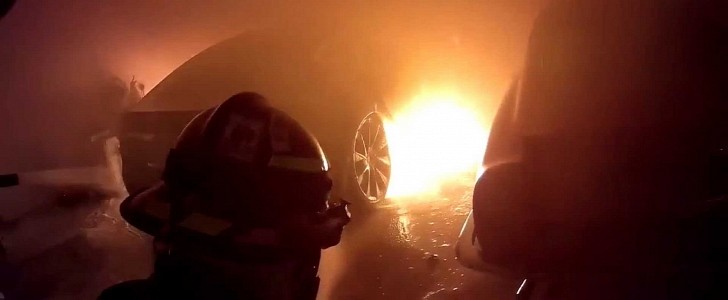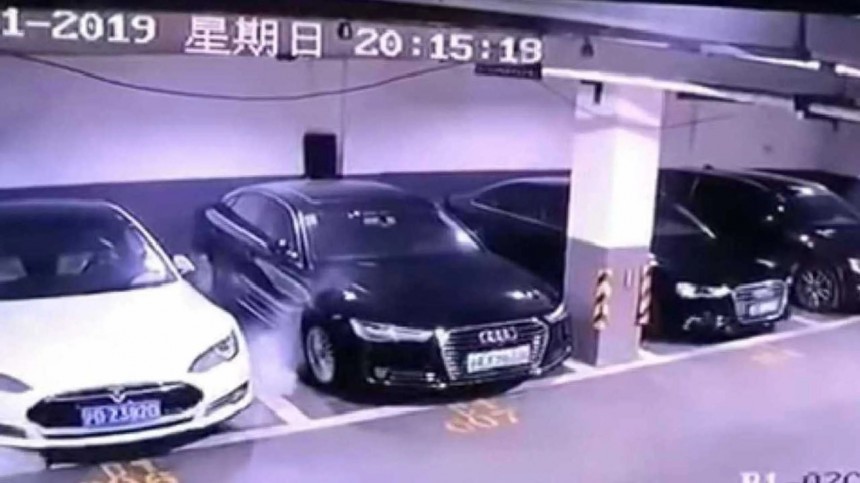Model S owners are suing Tesla for a voltage cap that reduced the range in their vehicles. The customer that started this lawsuit, David Rasmussen, claimed that Tesla performed the software updates 2019.16.1 or 2019.16.2 for the Model S and X to conceal fire risks. By coincidence or not, the updates happened shortly after a blaze affected a Model S in Shanghai in April 2019. This July 30, Reuters discovered that Tesla proposed to settle the lawsuit by paying $1.5 million.
That amount would include $410,000 due to the owners’ attorneys and $625 for each of the 1,743 vehicles that Tesla claims that had voltage caps. With that many vehicles, compensations would total $1,089,375, leading to a total value of $1,499,375.
The U.S. District Court in San Francisco that is in charge of the lawsuit set a hearing for December 9, probably to check if the owners involved will accept the settlement. We have contacted Rasmussen to hear what he had to say about the proposition, but he preferred not to make any public statements about it because “the court has not signed off on this settlement yet.” Apart from the financial part of the lawsuit, it is crucial to understand if other relevant issues it raised will also be addressed.
In his lawsuit, Rasmussen accused Tesla of consumer fraud and abuse act for “knowingly access a computer without authorization or exceeding authorized access.” In other words, Rasmussen was not ok with Tesla making an update and changing things in his car that he did not agree with.
That’s a similar protest to that made by Jason Hughes, the “Tesla Hacker.” On June 25, we told you that Hughes argued that Tesla had no right to block his car from fast charging in other charging networks and even at his home: the "Tesla Hacker" installed two Supercharger stalls in his garage. The company did that with an update that Hughes quickly reverted, but which other customers may not have the means or skills to solve.
Rasmussen’s lawsuit also said Tesla hurt the Magnuson-Moss Warranty Act and California’s Song-Beverly Consumer Warranty for refusing to put the cars to the condition in which they were before. That has apparently changed: the owners' lawyers would have admitted that the voltage restriction was temporary. For 1,552 vehicles, the voltage cap was completely reverted. For 57, a battery replacement was the solution. The other 134 would get the maximum voltage back over time.
Among the 19 allegations the lawsuit originally had are also fraud by concealment (due to the risk of fire), and breach of warranty, good faith, and fair dealing.
If the lawsuit is carried on, Tesla will probably have to expose why it made the updates in the first place. At least two more cases show that Tesla customers and fans have the right to learn more about that. The first one happened in Coral Gables, Florida, in July 2010. The second one was in Frisco, Texas, on November 24, 2020. More recently, a brand new Model S Plaid caught fire on June 29, 2021, but it is not clear if this case can be related to those that required the mysterious voltage-capping update.
If the Tesla owners feel that the company’s proposition is fair, they will most certainly have to sign an NDA (non-disclosure agreement) about everything. In other words, we’ll never know if the updates’ goal was to prevent fire risks, as the lawsuit claimed they did. GM tried to use updates to fix the Chevrolet Bolt EV fire risks, but it warned its customers about that before performing the updates.
Any present or eventual fire case with a Model S or X will require an individual lawsuit to determine the causes and ask for a proper fix or compensation. If a settlement does not kill our chances to know what happened, mind you. It would not be the first time.
The U.S. District Court in San Francisco that is in charge of the lawsuit set a hearing for December 9, probably to check if the owners involved will accept the settlement. We have contacted Rasmussen to hear what he had to say about the proposition, but he preferred not to make any public statements about it because “the court has not signed off on this settlement yet.” Apart from the financial part of the lawsuit, it is crucial to understand if other relevant issues it raised will also be addressed.
In his lawsuit, Rasmussen accused Tesla of consumer fraud and abuse act for “knowingly access a computer without authorization or exceeding authorized access.” In other words, Rasmussen was not ok with Tesla making an update and changing things in his car that he did not agree with.
Rasmussen’s lawsuit also said Tesla hurt the Magnuson-Moss Warranty Act and California’s Song-Beverly Consumer Warranty for refusing to put the cars to the condition in which they were before. That has apparently changed: the owners' lawyers would have admitted that the voltage restriction was temporary. For 1,552 vehicles, the voltage cap was completely reverted. For 57, a battery replacement was the solution. The other 134 would get the maximum voltage back over time.
Among the 19 allegations the lawsuit originally had are also fraud by concealment (due to the risk of fire), and breach of warranty, good faith, and fair dealing.
If the Tesla owners feel that the company’s proposition is fair, they will most certainly have to sign an NDA (non-disclosure agreement) about everything. In other words, we’ll never know if the updates’ goal was to prevent fire risks, as the lawsuit claimed they did. GM tried to use updates to fix the Chevrolet Bolt EV fire risks, but it warned its customers about that before performing the updates.
Any present or eventual fire case with a Model S or X will require an individual lawsuit to determine the causes and ask for a proper fix or compensation. If a settlement does not kill our chances to know what happened, mind you. It would not be the first time.















